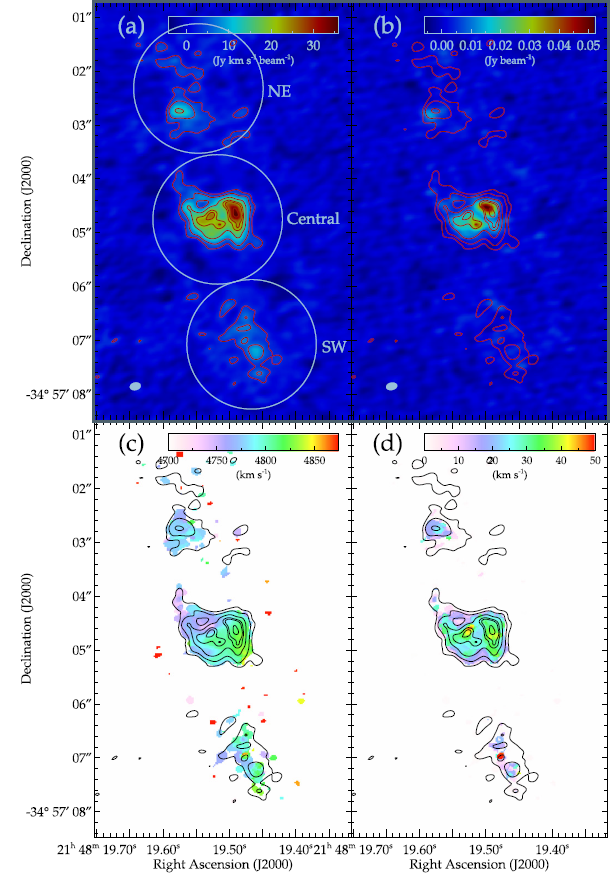We report our high-resolution (0 ''.20 x 0 ''.14 or similar to 70 x 49 pc) observations of the CO(6-5) line emission, which probes warm and dense molecular gas, and the 434 mu m dust continuum in the nuclear region of NGC 7130, obtained with the Atacama Large Millimeter Array (ALMA). The CO line and dust continuum fluxes detected in our ALMA observations are 1230 +/- 74 Jy km s(-1) and 814 +/- 52 mJy, respectively, which account for 100% and 51% of their total fluxes.
We find that the CO(6-5) and dust emissions are generally spatially correlated, but their brightest peaks show an offset of similar to 70 pc, suggesting that the gas and dust emissions may start decoupling at this physical scale. The brightest peak of the CO(6-5) emission does not spatially correspond to the radio continuum peak, which is likely dominated by an active galactic nucleus (AGN).

By with ZHAO Yinghe
Figure 1. CO(6-5) line emission contours of the integrated map superimposed on (a) the integrated CO(6-5) map; (b) the 434 μm continuum; (c) the first moment map;
and (d) the second moment map. The contour levels are [1, 2, 4, 6, 7, 10] × 3σ. The beam shapes are shown by the filled (white) ellipse in (a) and (b). The three circles
in (a) illustrate the labeled regions used in the text.
This, together with our additional quantitative analysis, suggests that the heating contribution of the AGN to the CO(6-5) emission in NGC 7130 is negligible. The CO(6-5) and the extinction-corrected Pa-alpha maps display striking differences, suggestive of either a breakdown of the correlation between warm dense gas and star formation at linear scales of <100 pc or a large uncertainty in our extinction correction to the observed Pa-a image. Over a larger scale of similar to 2.1 kpc, the doublelobed structure found in the CO(6-5) emission agrees well with the dust lanes in the optical/near-infrared images.
For more information about this study, visit: http://apps.webofknowledge.com/full_record.do?product=UA&search_mode=GeneralSearch&qid=1&SID=Z2xVYPZW4b1uIAOG6Kl&page=1&doc=4
|
(Information Source: Purple Mountain Observatory, CAS) |

